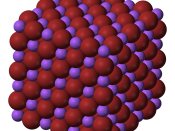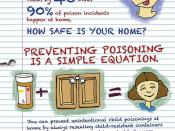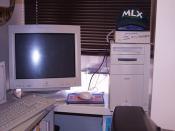I.Introduction
In this experiment we can see precipitate by observing variety of reaction. Precipitation will occur by precipitation reaction this is a reaction that two or more solution reacts to produce a precipitate. Also, there are often double displacement reactions. For example solution of Lead(òU)nitrate and Potassium iodide react:
Pb(NO3)2(aq) + 2KI (aq) è PbI2 (s) + 2KNO3 (aq)
You will see that PbI2 is the precipitate.
Now for example:
LI (aq) + Na(NO3)2 (aq) è NO PRECIPITATE
You will see that there was no precipitate I this reaction. Then, what is the difference between a reaction that makes precipitate and the reaction that makes no precipitate.
Indeed, in this experiment we will clarify this difference, to we will need to find out what chemical is causing this difference. It will be easier by using letters, for example:
AX + DZ è AZ + DX
CX + UZ è NO PRECIPITATE
This will tell us that substance CU caused the reaction, not to make precipitate.
By this we will find out the substance that influenced reaction. I will think in the same way as this.
II. Purpose
This experiment is to create a list of soluble and insoluble compounds. Finally by examining the list we will attempt to describe any pattern or trends that we see.
III. Materials
1)lithium iodide (source of lithium ions)
2)sodium chloride (source of sodium ions)
3)potassium bromide (source of potassium ions)
4)strontium nitrate (source of strontium ions)
5)barium chloride (source of barium ions)
6)lead(II) nitrate (source of lead ions)
7)silver nitrate (source of nitrate ions)
8)sodium nitrate (source of nitrate ions)
9)lithium sulfate (source of sulfate ions)
10) potassium hydroxide (source of hydroxide ions)
11) sodium chloride (source of chloride ions)
12) sodium bromide (source of bromide ions)
13) sodium iodide (source of iodide...


